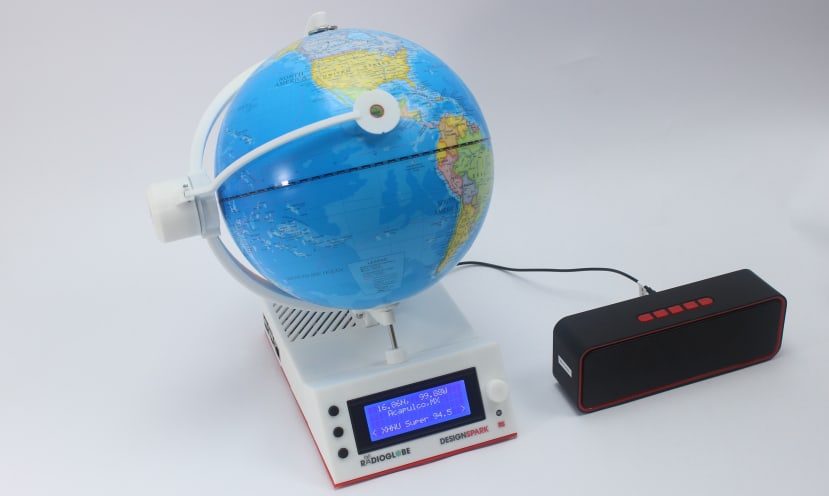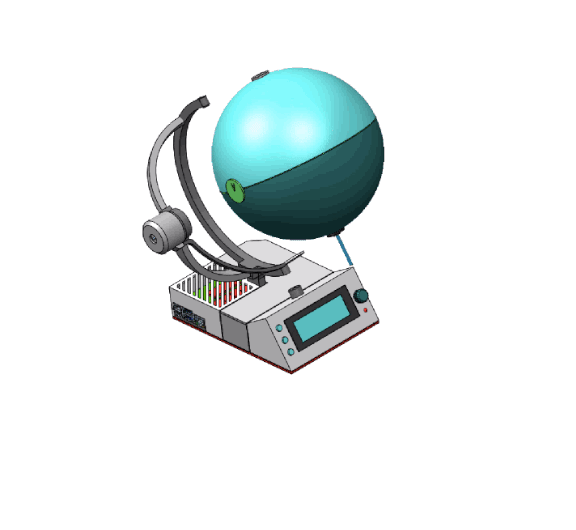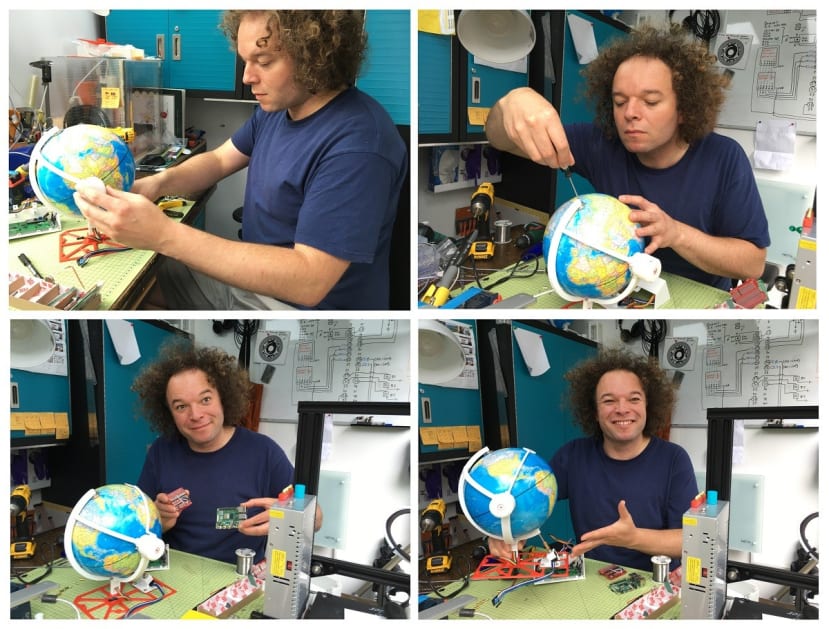How to build a 3D printed Radio Globe to tune into radio stations from around the world
Follow projectHow do you feel about this article? Help us to provide better content for you.
Thank you! Your feedback has been received.
There was a problem submitting your feedback, please try again later.
What do you think of this article?
 Ever wanted to explore thousands of the world's radio stations, in seconds, simply by spinning a globe? I created the DesignSpark Radio Globe to mark the 10th Birthday of DesignSpark and the launch of DesignSpark Mechanical v5.0.
Ever wanted to explore thousands of the world's radio stations, in seconds, simply by spinning a globe? I created the DesignSpark Radio Globe to mark the 10th Birthday of DesignSpark and the launch of DesignSpark Mechanical v5.0.
Parts list
| Qty | Product | Part number | |
|---|---|---|---|
| 2 | Bourns 1024 (Position) Pulse Absolute Mechanical Rotary Encoder with a 3.17 mm Plain Shaft (Not Indexed), Through Hole | 7899490 | |
| 1 | 1m x 4mm Diameter 303S31 Stainless Steel Rod | 0682810 | |
| 1 | Raspberry Pi 4 4G Model B | 182-2096 | |
| 1 | Raspberry Pi, 15.3W AC DC Adapter 5.1V dc, 3A, 1 Output Power Supply, Type G | 187-3416 | |
| 1 | RS PRO, M4 Brass Threaded Insert diameter 5.6mm Depth 7.95mm | 278-556 | |
| 1 | RS PRO 1.75mm White PLA 3D Printer Filament, 1kg | 832-0223 | |
| 1 | RS PRO, M3 Brass Threaded Insert diameter 4mm Depth 4.78mm | 278-534 | |
Have you ever wanted to explore thousands of the world's radio stations, in seconds, simply by spinning a globe? Then this is the project for you!
The RadioGlobe, has over 2000 stations (and counting), from all over the world. Part of the magic is the tension between familiarity and the unfamiliarity: It's both shocking how many radio stations play Western pop music, but then with a turn of the jog wheel, you find an alternative (in the same location) - and you navigate from Boosh FM's Drum & Bass to listening to a native dialect of New Zealand. It's frankly, mind-blowing, even though the technology has been around for years.
News is another revelation - it's all too easy to lapse into thinking my 'international' news is 'the benchmark'. I found myself listening to the same global updates on COVID-19, but rather than BBC News, I heard a local DJ discussing it in a chat radio station in South Africa - framing things in, frankly, a more gritty take... It's certainly different from what I am used to, and that's the point. Even the globe is shifted 6.5 degrees extra to make the viewing 'equal' between the northern and southern hemispheres - and yes, it's a nice metaphor for many things right now.
For Music fans, it does not disappoint. So much so, that it's almost giddying to find so much new music, and frustrating that I have to keep getting Shazam out! (We are working on this!). Of course, it must be said that there are desktop/mobile/apps that essentially do this already, but I like the physicality of the interface and the way it hones my spatial appreciation for things. (it's nice to put the phone down for a second!!). I was impressed that after a quick demo, my 4-year-old seemed very at home with the concept, so it passed the UI/UX test it seems.
Which leads me nicely to the last part of this project: It's all Open Source. The GitHub repository is open to anyone who would like to evolve the code to make the RadioGlobe even better. I feel this is a perfect project for the DesignSpark community to build, but also hopefully to give suggestions in comments for future ideas (or help create them!). All credit is given on GitHub, and we know a few designers in some very prestigious companies are watching, so you never know!
For more on the project, please check out my RadioGlobe Vlog (LINK), which I made for the project with DesignSpark, as part of their 10th Anniversary. Many thanks to them for commissioning me to simply 'do something awesome' - so I hope this delivers on that design brief! I think it's also really cool that they have supported the Open Source nature, with the Vlog and the GitHub work. As someone who has been making tutorials for years throughout my time at Dyson, Sugru, and LEGO, I value the 'warts and all' transparency, rather than the 'here's one I made earlier' approach. The Vlog is a day-by-day reality of the ups and downs of the project, the mistakes, and the wins. I hope it's useful for those interested in designing for prototyping, 3d printing, protoboard/PCB design, and of course a load of code! Happy making!
The DesignSpark Radio Globe is powered by a Raspberry Pi and uses high precision Rotary Encoders to pinpoint radio stations around the world. Together with a jog wheel and an LCD interface, users can tune in to more than 2000 radio stations and counting!
CAD modelling and 3D printing is a big part of the overall project. All the project files have been made available as open-source, and have been shared in various formats including DesignSpark Mechanical and DesignSpark PCB Pro.
This YouTube playlist follows the project from the beginning through to the final build.
If you'd like to create your own Radio Globe
Full build instructions can be found on Instructables
All key components are available from RS Components and Allied Electronics (North America)
All code can be found in the DesignSpark GitHub repository
The design files are too big to attach directly to this post, so they have been zipped up and hosted on the DesignSpark server for download
CAD files
STL files for 3D printing
DesignSpark Mechanical Files
Solid Works files
PCB Files
Open Source Licences -
Software and firmware: Apache 2.0 - All code can be found in the DesignSpark GitHub repository
Hardware - CERN OHL v2, the permissive variant "CERN-OHL-P" - All Design files are hosted on our cloud server see attached file for links.
Designed by: Jude Pullen
Software Code: Donald Robson
With thanks to:
DesignSpark PCB Pro layout by Kevin Hobbs
DesignSpark Mechanical support from Joydipto Choudhuri
Hardware Design Support by Ryan White
General Design Support from Pete Milne
Testing by Pete Wood






Comments